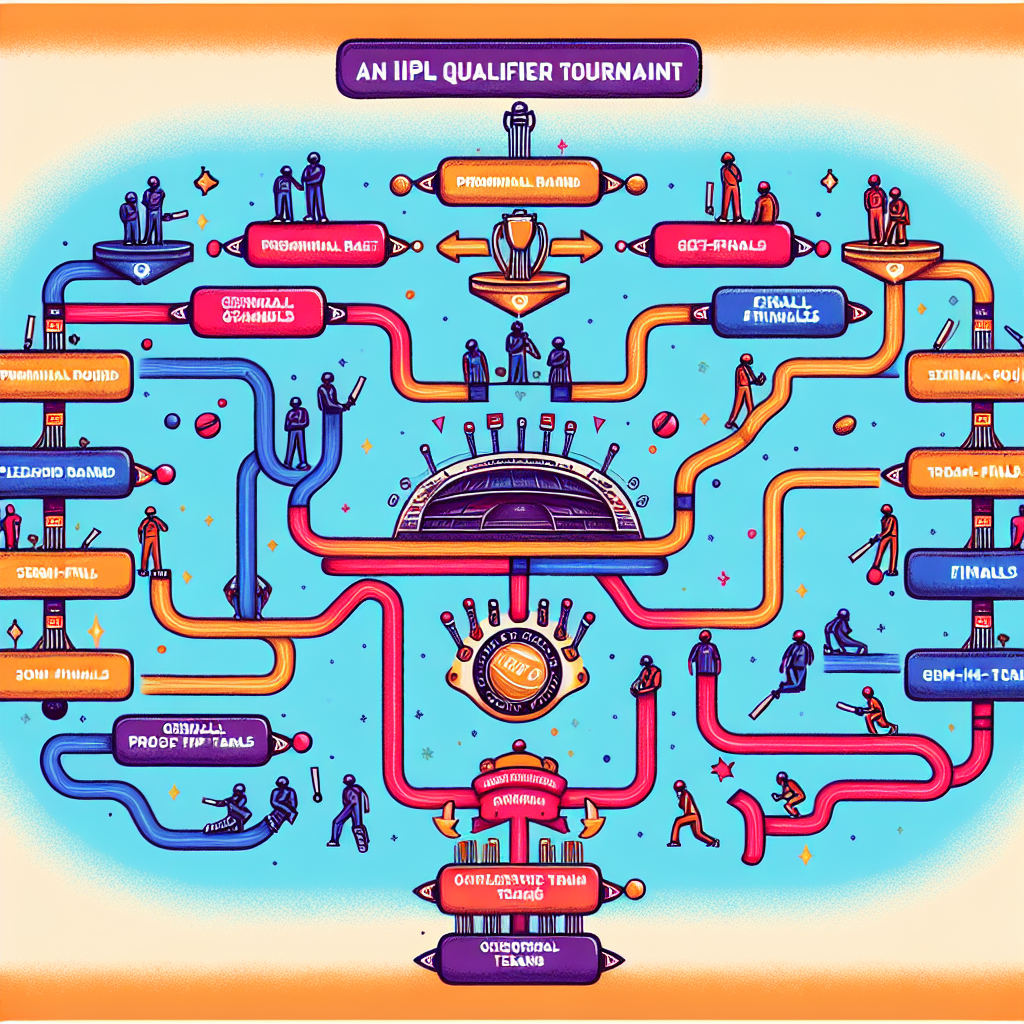Understanding the IPL Qualifier Chart: A Comprehensive Guide

The Indian Premier League (IPL) is one of the most celebrated cricket tournaments globally, attracting millions of fans and featuring some of the best cricketing talents. A crucial aspect of the IPL is its playoff system, which determines the teams that advance to the finals. The IPL Qualifier Chart is a key component of this system, providing a structured pathway for teams to compete for the championship. This article delves into the intricacies of the IPL Qualifier Chart, offering insights into its format, significance, and impact on the tournament.
The Structure of the IPL Playoffs
The IPL playoffs consist of four matches: Qualifier 1, Eliminator, Qualifier 2, and the Final. This format was introduced to ensure that the top-performing teams in the league stage have a fair chance to compete for the title. Here’s a breakdown of each stage:
- Qualifier 1: This match is played between the teams that finish first and second in the league stage. The winner of Qualifier 1 directly advances to the final.
- Eliminator: The third and fourth-placed teams face off in this match. The loser is eliminated from the tournament, while the winner moves on to Qualifier 2.
- Qualifier 2: The loser of Qualifier 1 and the winner of the Eliminator compete in this match. The victor secures the second spot in the final.
- Final: The winners of Qualifier 1 and Qualifier 2 battle it out for the IPL championship.
Significance of the IPL Qualifier Chart
The IPL Qualifier Chart is significant for several reasons:
- Rewarding Consistency: The top two teams from the league stage have two opportunities to reach the final, rewarding their consistent performance throughout the tournament.
- Increased Competition: The playoff format ensures that teams remain competitive until the very end of the league stage, as finishing in the top two provides a significant advantage.
- Excitement and Drama: The knockout nature of the Eliminator and Qualifier 2 adds an element of excitement and unpredictability, keeping fans engaged.
Case Studies: Memorable IPL Playoff Moments
Over the years, the IPL playoffs have produced numerous memorable moments that highlight the drama and intensity of the tournament. Here are a few notable examples:
2012: Chennai Super Kings vs. Delhi Daredevils
In the 2012 Eliminator, Chennai Super Kings (CSK) faced Delhi Daredevils (now Delhi Capitals). CSK, led by the charismatic MS Dhoni, put on a dominant performance, with Murali Vijay scoring a blistering century. This victory propelled CSK to Qualifier 2, where they defeated Mumbai Indians to reach the final. Although they eventually lost to Kolkata Knight Riders in the final, CSK’s journey through the playoffs was a testament to their resilience and skill.
2018: Sunrisers Hyderabad vs. Kolkata Knight Riders
The 2018 Qualifier 2 between Sunrisers Hyderabad (SRH) and Kolkata Knight Riders (KKR) was a thrilling encounter. SRH, led by Kane Williamson, posted a competitive total, thanks to a brilliant innings by Rashid Khan. In response, KKR fell short, with Rashid Khan also starring with the ball. SRH’s victory secured their place in the final against Chennai Super Kings, showcasing the impact of all-round performances in the playoffs.
Statistical Insights: Trends in IPL Playoffs
Analyzing the statistics from past IPL playoffs provides valuable insights into trends and patterns:
- Top Performers: Teams with strong batting line-ups have historically performed well in the playoffs. For instance, Mumbai Indians and Chennai Super Kings, known for their powerful batting, have consistently reached the finals.
- Importance of All-Rounders: All-rounders play a crucial role in the playoffs, providing balance to the team. Players like Shane Watson, Kieron Pollard, and Andre Russell have been instrumental in their teams’ success.
- Home Advantage: While the playoffs are often held at neutral venues, teams with a strong fan base and familiarity with conditions tend to perform better.
The Impact of the IPL Qualifier Chart on Teams
The IPL Qualifier Chart significantly impacts team strategies and dynamics:
- Strategic Planning: Teams aim to finish in the top two to secure a direct path to the final, influencing their approach to squad rotation and player management during the league stage.
- Psychological Edge: Winning Qualifier 1 provides a psychological advantage, as teams have more time to prepare for the final and can approach it with confidence.
- Pressure Handling: The knockout nature of the Eliminator and Qualifier 2 tests teams’ ability to handle pressure, often bringing out the best in experienced players.
Conclusion: The Essence of the IPL Qualifier Chart
The IPL Qualifier Chart is a vital component of the tournament, adding layers of strategy, excitement, and competition. It rewards consistent performance while providing opportunities for teams to showcase their resilience and skill under pressure. As the IPL continues to evolve, the playoff format remains a cornerstone of its success, captivating fans and players alike. Understanding the nuances of the IPL Qualifier Chart enhances our appreciation of the tournament and the thrilling cricketing action it delivers each year.